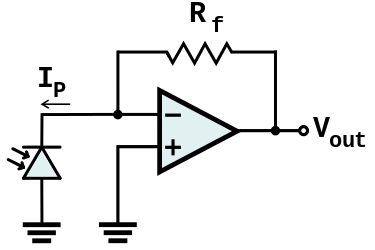A transimpedance amplifier (TIA) is "current in" and "voltage out" circuit. The input impedance is theoretically zero ohms so if you tried to put a milli-volt at the input the current taken (theoretically) would be infinite.
They are quite commonly used for amplifying photodiodes: -
Reason: the output from a photodiode (PD) is current for a given light-power-density on the device. It produces a current out and, if you connected the PD output to a resistor, it would still try to push the same current through that resistor for the same light input. The side effect of this is that there will be a voltage produced across that resistor to keep ohms law happy.
So why not just feed the PD output to a resistor and use a voltage amplifier? You can do this but what you will find is that if the light is modulated (i.e. a typical data transmission from say a fiber optic), the presense of the resistor (and the self-capacitance of the PD) will form a low pass filter and make the data look very non-ideal.
So a TIA is used because it's input impedance is zero ohms i.e. it is a current-in device with zero volts produced.

